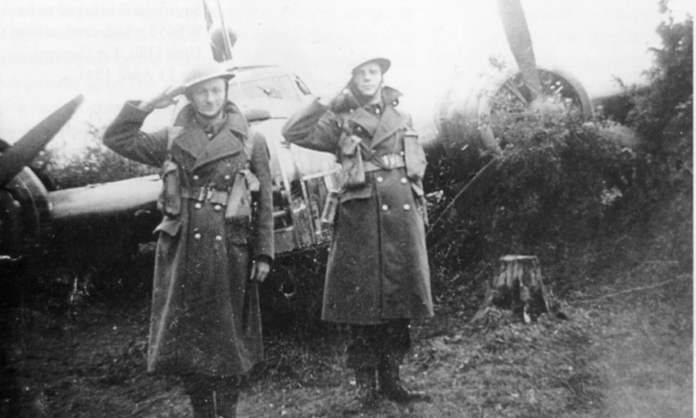By Michael O’Reilly
The old adage ‘a picture is worth a thousand words’ should be very appropriate with this article. That limited narrative is strongly relying on the two photographs for informative support.
At approximately 15.40 hrs on Saturday, 26 September 1942 a twin-engine aircraft was observed droning over Monaghan town in neutral Eire. It was later reported over counties Cavan, Galway, Clare, Limerick and Cork. The aircraft appeared to be flying an erratic course, circling over various points as if endeavouring to lock onto definitive bearings.
Eventually, after circling Charleville, Co Cork, the aircraft gradually descended and settled onto what would be a landing approach. As the aircraft’s image enlarged when it sank over the green fields and hedgerows, its form and markings would soon reveal it to be an RAF Vickers Wellington. Within minutes the aircraft touched down on grassland at Deerpark about half a mile north of Charleville.
However, the aircraft was to ‘run out of field’, it becoming embedded in a large boundary hedge. Although somewhat shaken the four crewmen were uninjured and one by one started exiting the aircraft. Some locals who had witnessed the aircraft coming down at 18.50 hrs were soon eagerly approaching the scene. Similarly approaching were the Gardai and a military party who would soon cordon off the area.
The aircraft’s undercarriage, starboard wing and bomb bays were damaged and not repairable on site. Although armed with four .303” Browning machine guns, there was no ammunition on board.
Reportage of the incident was quite sparse. However, the pilot told of them departing Limavady, Co Derry at 11.00 hrs for Abbotsinch near Glasgow. It was on the return trip they lost their bearings, which along with an unserviceable radio and shortage of fuel forced them to land.
The following day, Sunday at 12.15 hrs the crewmen were handed over to a British Representative at Corkagh House just west of Clondalkin. Arrangements were finalised there for the repatriation of the men to their UK RAF base.
The crewmen’s details were:
Pilot Officer Wilfred J. Broughton of Keelby, Haybrough, Lincolnshire
Sergeant Alfred J. Boulton of Hallend, Wickwar, Gloucestershire
Sergeant George R. Unitt of Dudley Street, Punchbowl, New South Wales, Australia
Leading Aircrafts Man Erick Chisholm of Erskine Street, Aberdeen
The power plant mostly associated with the Wellington was the Bristol Hercules 14 cylinder radial engine. Whilst earlier Wellingtons were fitted with the smaller capacity Bristol Pegasus engines, later on Rolls Royce V12 cylinder Merlins powered a sizeable minority of aircraft.
During the war a larger version of the Wellington was developed. Called the Vickers Warwick it was typically powered by Bristol Centaurus 18 cylinder radial engines. Built in military, air-sea-rescue, freight and civil passenger models it continued in service up to the early 1950s.








